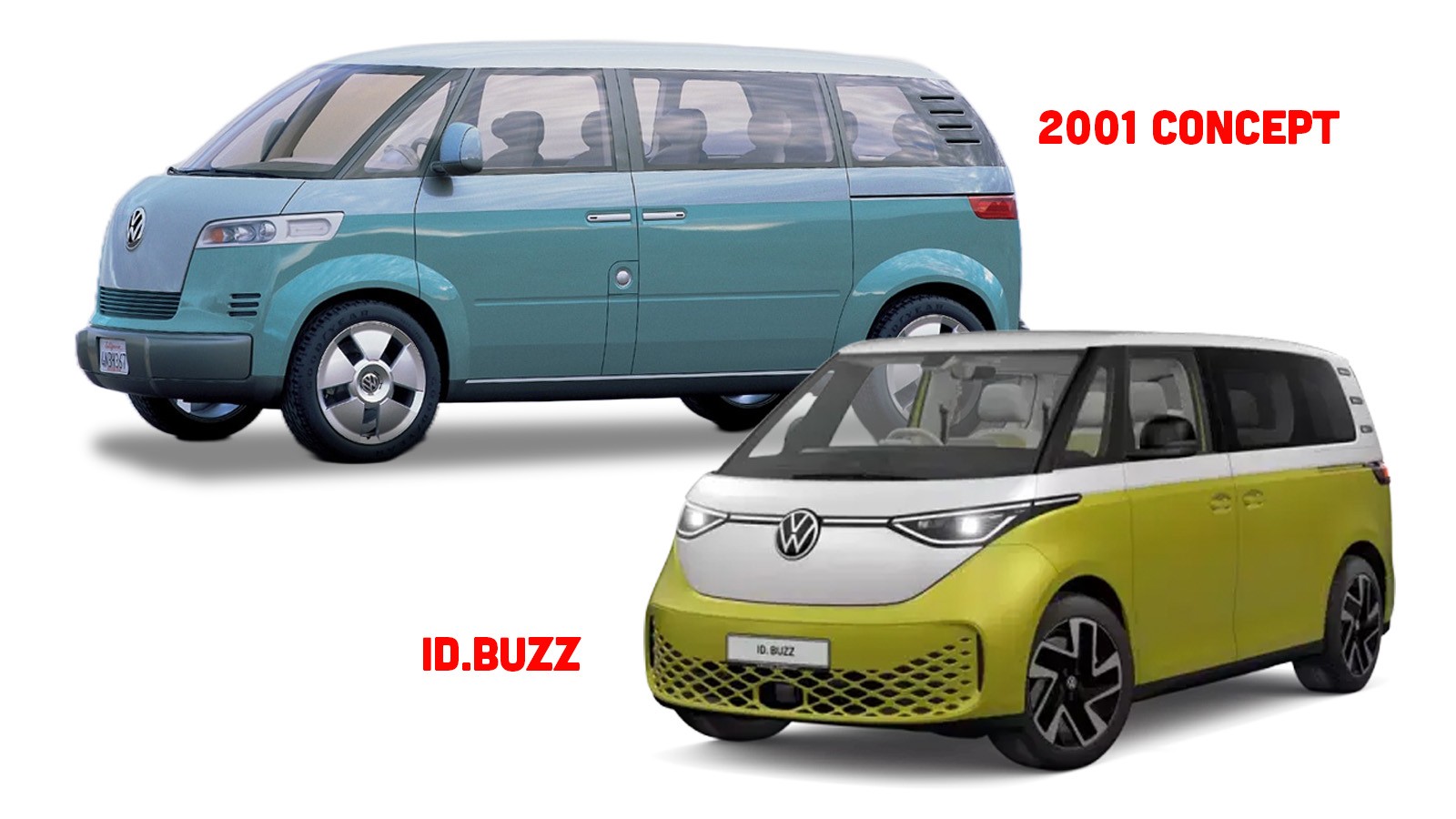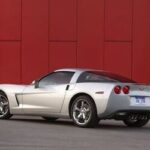Volkswagen’s revival of the iconic Microbus as the all-electric ID. Buzz has been a long and anticipated journey. As an auto repair expert, I, like many, was excited about the blend of nostalgic design and modern EV technology. The original VW Microbus was a symbol of clever, practical design with a unique personality, a vehicle that brought smiles and fond memories. Hopes were high that the ID. Buzz could capture some of that magic for a new generation. Having spent a week putting the ID. Buzz through its paces, specifically on a road trip, I’ve come away with mixed feelings. There’s much to admire about this electric van, but a critical flaw in its real-world range significantly impacts its practicality, especially for the kind of adventures the original Microbus was built for.
I’ve been tracking the ID. Buzz story for quite some time. My first encounter was with the European short-wheelbase version back in 2022. Then, in 2023, I witnessed the unveiling of the US-spec long-wheelbase model. Finally, last October, I had the chance to drive the long-wheelbase ID. Buzz. Volkswagen has certainly built up the anticipation for this vehicle over several years.
The real test, however, was always going to be how the ID. Buzz performs in real-world conditions, away from carefully planned press events. To truly evaluate its capabilities, I needed to take it on a proper road trip, pushing its range on highways without the support of manufacturer-organized logistics. This was the crucial missing piece in my previous experiences with the ID. Buzz. Considering the concept of a reborn Microbus has been around since the 2001 concept:
It was time to see if the production ID. Buzz could live up to the legacy and the hype. So, when the opportunity arose to spend a week with an ID. Buzz, I knew exactly what I had to do: embark on a road trip and see how this electric van handles the demands of highway driving and charging in the real world.
Road Trip Range Reality of the ID. Buzz
My primary concern, based on previous drives, was whether the ID. Buzz’s all-electric powertrain would compromise its road trip suitability. The vehicle itself is brilliantly designed for travel. Its boxy shape maximizes interior space, providing generous legroom and headroom in all three rows. This is where the ID. Buzz excels; it’s a spacious and comfortable vehicle, perfectly suited for passengers and cargo.
Even with all seats in use, there’s ample luggage space. Folding down the middle row and removing the rear seats reveals a cavernous cargo area. The ID. Buzz is inherently a fantastic road trip vehicle in terms of space, comfort, and design. To test this, I planned a trip from central North Carolina to Savannah, Georgia – approximately a five-hour drive under normal circumstances. It was a relatively light trip, just two occupants and minimal luggage, far from the ID. Buzz’s maximum capacity.
The Range Problem: City EV vs. Road Trip Van
However, the idyllic road trip vision hits a significant roadblock: range. The ID. Buzz, despite its road trip-ready design, is hampered by a range that feels more appropriate for city driving.
The official EPA-estimated range for the rear-wheel-drive ID. Buzz model I tested is 234 miles. However, this figure represents a combined driving cycle, not necessarily real-world highway road trip conditions. During my test, conducted in colder weather requiring heater use, and with the battery charged to 90% (from the default 80% to maximize range), driving at typical highway speeds of 65-75 mph, the actual range was significantly lower. I consistently saw between 170 and 190 miles of range, and often less, as the navigation system proactively directed me to charging stations well before reaching critically low battery levels.
Realistically, this translates to charging stops every 150 to 160 miles, approximately every two hours of driving. This frequency of stops is simply insufficient for comfortable long-distance travel. Furthermore, the charging process itself is not as quick or convenient as refueling a gasoline vehicle. While the ID. Buzz isn’t solely to blame for the limitations of the current charging infrastructure in the US, it is undeniably affected by it. The convenience of home charging, often touted as a major advantage of EVs, diminishes significantly on road trips. While ideal for daily commutes with a Level 2 charger at home, the public charging network becomes paramount for long journeys.
Road trips necessitate utilizing the fastest available chargers, as slower chargers can add hours to travel time. Upon returning from my trip, I experienced this firsthand when a local charger provided a mere 15 miles of range per hour. Starting at a 20% charge, a full charge would have required an impractical 8+ hours.
View this post on Instagram
Fast chargers do exist, some even unexpectedly branded, like the Mercedes-Benz branded ChargePoint station I encountered.
Despite the branding anomaly, it functioned as a standard ChargePoint charger. Most charging stops on my trip averaged around 30 minutes, often located behind retail locations like Walmart, sometimes next to stacks of shipping containers – hardly an ideal or scenic travel experience. Moreover, charging wasn’t cheap. Each charging session for the ID. Buzz cost between $40 and $45, and the round trip required at least two charges, possibly more. In total, the charging costs exceeded what gasoline would have cost for a comparable combustion engine vehicle on the same trip.
The EV charging experience, in general, still lags behind the ease and speed of gasoline refueling. Charger reliability can also be an issue, with malfunctioning units being a frustrating reality, reminiscent of dealing with a crashed computer.
While the upcoming Tesla Supercharger adapter for non-Tesla EVs might improve charging accessibility, it still doesn’t address the fundamental issue of charging time compared to gasoline refueling, which remains the benchmark for convenience.
Frustration and the Missed Potential of the ID. Buzz
This brings us to the core question: what is the true purpose of the ID. Buzz in its current form? As a cargo van, utilizing its platform for local deliveries makes perfect sense. However, the passenger ID. Buzz, both in design and spirit, is clearly intended to be a vehicle for adventure, for road trips, for enabling freedom and exploration with passengers and gear.
And it’s not an inexpensive vehicle. With a starting price around $60,000, the ID. Buzz is a significant investment.
The interior is exceptionally comfortable and spacious, even in the darker trim I tested (preferable to the brighter, more playful color schemes). The multi-zone climate control is excellent, and the audio system is impressive. It’s a fantastic space for passengers to spend hours on the road, enjoying the journey together.
Unfortunately, a significant portion of those “hours on the road” will be spent stationary, waiting for a charge, often in uninspiring locations. The ID. Buzz excels in many areas. The driving experience is surprisingly good. The acceleration is remarkable, especially when compared to the original VW Bus. Highway driving is smooth and stable, thanks to the low center of gravity from the battery pack. Handling, for a vehicle of its size, is also commendable. The brakes are excellent, a feature I appreciated when a deer unexpectedly crossed my path.
Visually, the ID. Buzz is a standout. The two-tone paint scheme is undeniably appealing, contributing significantly to its retro charm. It’s a vehicle that turns heads and evokes smiles, a genuinely cool minivan, a rare achievement in itself. It’s fast, spacious, practical, stylish, and comfortable – almost everything you could want in a vehicle. Except, crucially, its limited range severely restricts its usability for its intended purpose: road trips. It’s perfectly adequate for city driving, but that misses the point of what this vehicle is meant to be.
The frustration is immense. It’s akin to discovering a cloned Leonardo DaVinci, possessing all the appearance and mannerisms of the original, only to find he’s incapable of painting or drawing. The potential is there, but a critical capability is missing.
A Hybrid Solution for the ID. Buzz
The frustrating aspect is that the range limitation is a solvable problem. A hybrid or range-extended version of the ID. Buzz would fundamentally transform the vehicle. Imagine an ID. Buzz equipped with a range extender, similar to what VW is planning for the new Scout vehicles. This would create a truly exceptional machine.
And technically, it seems entirely feasible. Consider this:
Reducing the battery pack size slightly could free up space to accommodate a combustion engine, perhaps a flat inline engine or a horizontally opposed engine. The fuel tank could be positioned at the front – a layout that might seem familiar:
Indeed, a range-extended ID. Buzz appears to be a logical evolution. Especially with VW’s commitment to range-extended EVs in the Scout line, applying this technology to the ID. Buzz could create a vehicle that excels both as an EV for daily driving and as a capable road trip machine, free from range anxiety. However, the current all-electric ID. Buzz, likely influenced by the fallout from Dieselgate and the push towards full electrification, falls short of its potential. It’s a vehicle hampered by external factors and missed opportunities. As it stands, the ID. Buzz evokes a sense of disappointment.
It’s a sadness for what could have been, for what is so tantalizingly close to being truly great. Volkswagen needs to critically re-evaluate the ID. Buzz and complete the job, to realize its full potential. They have all the necessary ingredients; they just need to assemble them correctly. The desire for the ID. Buzz to succeed is palpable, and with a range-extended option, it truly could.


